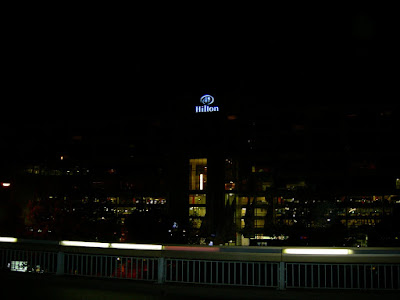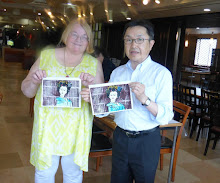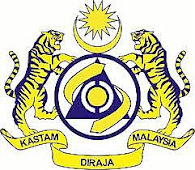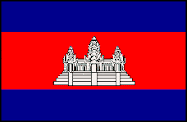After leaving the Baba Nyonya Heritage Museum. I made my way further into Chinatown with the intention of seeing several "sites". I do find Chinatown(s) fascinating, no matter where they are. Home here in Melbourne, we have a wonderful Chinatown right in the middle of the city in the Little Bourke Street area from Swanston Street all the way up to Spring Street. It's the oldest Chinatown in Australia (1851).
As I wandered around I was immersed in the sights and sounds and gaiety and hubub. I was so enjoying myself, that I did have to retrace my steps not a few times and the many tombs etc I had intended to see and photograph went unseen. I did however, manage to see a few.
Masjid Kampung Kling
This is one of the oldest mosques in the country with Sumatran architectural features. It has a three-tiered pyramid-shape rood and a pagoda like minaret, portraying a mixture of East-West architectural influences. It is the site of the Mandi safar or bathing festival celebrated by Indian moslems during the moslem month of safar. Since the Islamic lunar calendar year is 11 to 12 days shorter than the solar year, safar changes throughout the seasons. (From tourist brochure)
The mosque is in Goldsmith Road (Malay, Jalan Tukang Emas) and is also known as "Harmony Street" because it's near the Sri Poyatha Moorthi Temple and Cheng Hoon Teng Temple. With so many religious buildings it's no wonder the street is nicknamed "Harmony" Street.
Above: Masjid Kampung Kling mosque
I quite liked the roof architecture, the pyramidal type roof has white sculptured joinery and blue and white lacework around the rooflines is decorative and pleasing to the eye. As far as photos go, this was the best I could do - trying to capture the roofline in one section. I'd have liked to be able to get a shot of the roof plus the pagoda (minaret) but it wasn't possible. Now if we could just get all the people milling about with their cameras and other paraphernalia out of the way I might have stood a better chance. But alas, as often happens, it was not to be.
Above: Entrance detail
The entrance arch which is quite unique, was built at the same time as the main building.
Above: Kampung Kling Mosque
It is a minaret but resembles a pagoda. This too, has a matching green roof which I couldn't get in the shot. There are a couple of loud speakers up high in the top windows. Minarets are used for the call to prayer and provide a visual focal point. I liked the smooth straight lines of this - quite plain with unfussy detail it is the simplicity which draws the eye. At least in my opinion. There is a place for fancy artwork and carving and there is a place for understated simplicity.
Cheng Hoon Teng Temple
This beautiful old temple is at 25 Temple street (Jalan Tokong) and is one of the oldest Chinese temples in Malaysia, being built in 1645 and was was founded by the Kapitan China Tay Kie Ki aka Tay Hong Yong. It is also the most venerable of Malaysia's temples. Known too as "Temple of Clear Clouds", the main shrine hall has no nails whatsoever - nails are unlucky in Chinese culture - which makes the stateliness and dignity of Cheng Hoon Teng's structure even more impressive.
Above: Cheng Hoon Teng Temple Gates
Cheng Hoon Teng Temple is dedicated to the Goddess of Mercy, Quan Yin and was constructed by skilled workers from China - master craftsmen, artisans and carpenters and with its curved roof ridge, chien nien decoration, and gable design, reflects the architectural style and craftmanship of Southern China, mainly from the provinces of Fujian and Guangdong.
The roof of the temple, in Chinese tradition, has beautiful carvings. All the building materials were imported from China.
Above: Chien Nien ~ decorative sculptures
Above: Chien Nien
The term Chien Nien literally means "cut and glue," and is a centuries old art which is one of the most outstanding visual characteristics of Chinese temples. It is the art of turning ceramic bowls and pieces of glass into artistic figures that come alive with colour and symbolism and your eye is drawn to the decoratvie visual. Traditionally, Chien Nien turned waste into art, because the artisans used broken ceramic and porcelain bowls to construct the figures.
Did you know?
The building of Cheng Hoon Teng Temple conforms strictly to the feng shui principles, incorporating the fundamental belief that every aspect of life is closely related to attaining perfect harmony with nature. The temple was carefully laid out to ensure a view of the river and high ground on either side.
Above: Round window
This is the elaborate design on the left side of the temple gate.
Above: Cheng Hoon Teng Temple doors
Chinese characters on the doors
Above: At prayer
Inside the Cheng Hoon Teng temple. The central altar is dedicated to Kuan Yin, the goddess of mercy. To her left (in the worshippers' direction) is Ma Choe Poh, guardian of fishermen, sailors and sea travellers. Next to her is the goddess of birth. On the far end is Kuan Kong. The diety with the gold face is Pau Sen Ta Tek, the god of welding.
Welding?
There's a god of welding? I mean most of us know there's a god of fishermen, and a god of war, or a god of thunder - but welding? Well, chalk that up in your memory under
"Bits of Useless Trivia" - Just think, next time you're at a party, or a gathering and some smartarse know-it-all brags about his knowledge, you can bring out this little gem - bet there wouldn't be too many who know that there's a god of welding, much less the name of that god!!
There was a women's sanitary product some years ago which had bits of useless trivia on the wrapping. One that sticks in my mind is "Sausages were legal tender in East Germany until 1990" - see what I mean by
Bits of Useless Trivia?☻
Hang Kasturi's Mausoleum
Hang Kasturi was one of the five famous Malay warriors during the time of the Malacca Sultanate, particularly during the reign of Sultan Mansur Shah (1456-1477), the other four being Hang Tuah, Hang Jebat, Hang Lekiu and Hang Lekir. As young men, they studied the martial art of silat under the same silat master.
Above: The mausoleum is surrounded by high, white walls.
Do yon know, one thing I've never really understood is why are there always high walls around a cemetery or mausoleum? I mean it's not like those on the outside want to be in there and those on the inside aren't going to get out. Hmmm ...
What is Silat?
Silat is the word for indigenous martial arts that originates from Malaysia. Silat is one of the sports included in the
South East Asia Games. The best way to describe this (Silat) in my own words would be it is a collection of different styles of fighting combined together.
Above: Hang Kasturi's tomb
Hang Kasturi's tomb has strong Hindu influences in its structures, typically there are the triangular holes for putting oil lamps. (So says the brochure). Me? I thought the uprights had a Moorish look to them and the triangular cutouts were for decoration.
Who was Hang Kasturi?
There's obviously been very little written about him because if there was, I would have found it by now. I've searched that many websites (even translated from Malay to English) to no avail. The bare minimum is all that comes up and by the bare minimum I do mean the
bare minimum - it's not enough to fill a postage stamp.
Now, I've read through the stories and rather than do the stilted version, I'll just write it in my own words .....
ONCE UPON A TIME there lived a fellow called Hang Kasturi who hung out with his four best mates - Hang Jebat, Hang Lekir, Hang Lekiu and Hang Tuah. Kasturi and his mates had learned the Malaysian martial arts since they were knee high to a grasshopper and by the time they reached adulthood were the very best warriors around.
Word of their great fighting skill reached the Sultan's ears and he picked them to be his personal guards. Sultan Mansur Shah was pretty pleased with them for they fought his wars, helped him conquer enemies and gained him greater power.
But (there's always a but) it seems that some people at the Royal Court suffered with the green eyed monster and got pretty pissed off and plotted and planned ways to get rid of them. Word got around that one of them (Hang Tuah) was having it off with one of the Sultan's fancy women. Now - a Sultan may be thankful indeed to these blokes for all they had done for him but come near any of his women and you're up you know what creek without a paddle. So what is a Sultan to do? "Off with his head" - Sultan ordered the bloke killed, in other words, shoot first, ask questions later.
The chap charged with getting rid of Hang Tuah thought it was a crock and hid him in the jungle.
Now, when Kasturi heard about his friend, he was so angry he rose against the Sultan who later found out that Hang Tuah was innocent, wasn't dead, gave him a pardon and ordered him to kill Kasturi. Turns out both of these blokes were good and honest and hadn't been dallying around - it was Hang Jebat who had been having it off with one of the Sultan's women. But ... with the annals of time it really doesn't seem all that important today. I like to think that Jebat fell in love and the lady returned his love and they were a pair of star-crossed lovers. In another place, another time, things may have been different.
I don't really think much of this Sultan, this Mansur Shah to be honest. He couldn't be bothered to investigate whether the claim against Hang Tuah was true or not, he acted in haste and made a bad judgement. One wonders whether it was his heart that was hurt or just his pride. Understandably, a man wouldn't much like the idea of being a cuckold but he should still have asked questions. Because of his pride people were killed. They were pretty ruthless and blood-thirsty in them days weren't they?
Above: Tomb of Hang Kasturi information board
Sri Poyyatha Vinayaga Moorthy temple
Moving on from Hang Kasturi's resting place, we come to this colourful little beauty - the Sri Poyyatha Vinayaga Moorthy temple. Bit of a mouthful that. Built in 1781 by the HIndu community, the Sri Poyyatha Vinayagar Moorthi Temple (sometimes referred to as simply Sri Poyyatha Temple) is said to be the oldest Hindu Temple in Malaysia. The temple is dedicated to the deity Vinayagar, aka Ganesha, the elephant deity.
Sri Poyyatha Vinayagar Moorthi Temple is the main focal point for the Hindu community in Malacca as it links all the other Hindu temples in Malacca.
Above: The gopuram of the temple
I couldn't get a decent photo of this place - the lower section was all locked and had bars in front of it. It looked rather old and forlorn and not very happy. So I've cropped the picture and just showing the gopuram and a section of roofline.
Above: Sri Poyyatha Vinayaga Moorthy temple
This is what the inside looks like, I pushed the camera lens through the bars to take this photo. From what I've been able to find out, it's mostly used for celebrations now.
Above: Chinese temple
A Chinese temple I found. No idea which street it's in or what it's called.
Above: Shopping
Above: Orang Belanda Art Café
The Orang Belanda Art Café (or Dutchman's Art Café) is in Heeren Street near where I was staying. They do French, Dutch and Scandinavian cuisine.
An Orang Belanda also refers to the
Proboscis monkey
Next: A Chinese funeral.





























































